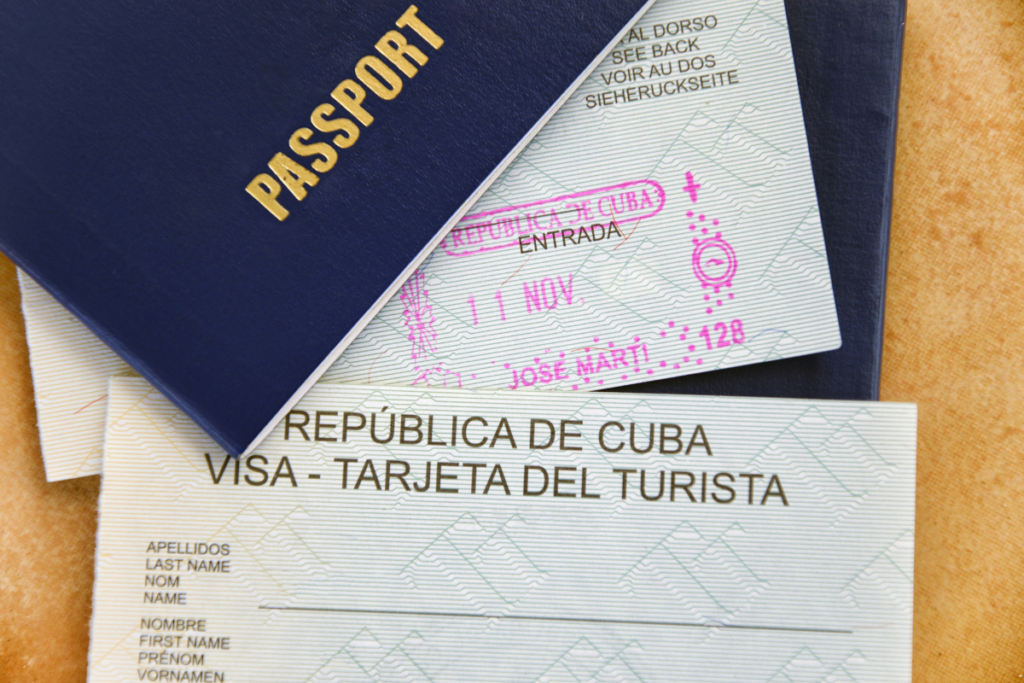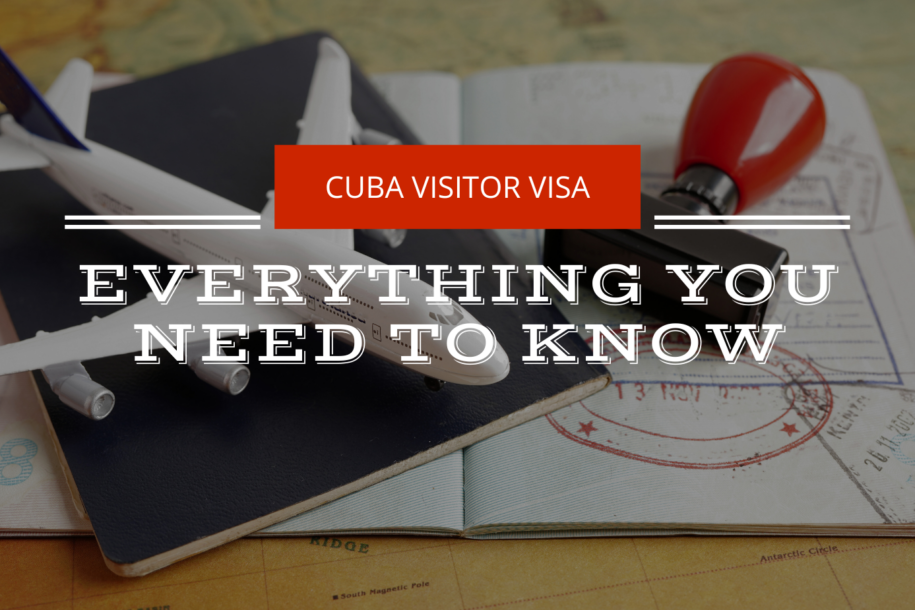Traveling to Cuba has always held a special allure for those seeking a mix of rich history, vibrant culture, and stunning landscapes. However, navigating the visa requirements to visit the island can sometimes be confusing, especially with recent changes on the horizon.
In 2025, Cuba is set to introduce an electronic visa system (e-Visa), which promises to simplify the process and replace the traditional tourist card. Here’s everything you need to know about obtaining a visitor visa for Cuba, including what to expect with the new e-Visa system.
Table of Contents
Understanding the Current Visa Requirements

Do I Need a Visa to Visit Cuba?
Yes, most foreign nationals require a visa to enter Cuba. The type of visa you need will depend on your nationality and your point of departure. Currently, the most common visa for tourists is the “Tarjeta del Turista” or tourist card, which is issued in advance and allows for a stay of up to 30 days for tourism purposes.
Citizens of the United States, Canada, European Union countries, Japan, Switzerland, and several other nations are eligible to apply for this tourist card. This visa is available in two colors: green and pink. The color indicates the country from which you are traveling, with the pink card typically used for those traveling directly from the United States.
The Transition to e-Visa
Starting in 2025, Cuba plans to transition fully to an electronic visa system (e-Visa), which will replace the traditional tourist card. This move is aimed at streamlining the visa application process and making it more accessible for travelers worldwide. The e-Visa will be linked electronically to your passport, eliminating the need for physical documentation.
The e-Visa Application Process
How to Apply for a Cuba e-Visa
The e-Visa application process is designed to be straightforward and user-friendly. You can complete the application online in English, French, or Spanish via the official Cuban government portal here. Here’s a step-by-step guide:
- Personal Information: You’ll need to provide basic personal details, including your full name, date of birth, nationality, and passport information. Ensure that your passport is valid for at least six months beyond your planned departure from Cuba.
- Email Address: A valid email address is required to receive your visa code. This code will be electronically linked to your passport.
- Visa Fee: The application will require payment of a visa fee, which can be done using a credit or debit card.
- Processing Time: The standard processing time for the e-Visa is 72 hours on business days. However, this can vary depending on the volume of applications, so it’s wise to apply well in advance of your planned travel dates.
Validity and Conditions of the e-Visa
The e-Visa for Cuba is valid for a single entry and allows for a stay of up to 90 days, with the option to renew for an additional 90 days. It is essential to travel with the passport used during your e-Visa application, as the visa is electronically linked to that specific passport. If your passport changes before your trip, you will need to reapply for a new e-Visa.
Special Conditions for Travelers
Travelers Arriving by Sea
If you plan to arrive in Cuba by sea, such as on a cruise or a private yacht, you will still need to visit a Cuban consulate to obtain a visa. The e-Visa is currently not available for maritime entry, so traditional visa processes will apply.
Traveling via the United States
For travelers flying to Cuba from the United States, the visa requirements have some additional nuances. Historically, visitors would obtain a pink tourist card when flying directly from the U.S. to Cuba. This process is expected to change with the introduction of the e-Visa, but until the full transition in 2025, the pink card remains in use.
If you are traveling to Cuba via the U.S., you can purchase the pink visa at the airport before boarding your flight to Havana. The cost ranges from $50 to $100 USD. Some U.S. airlines also offer the option to purchase the visa in advance and have it mailed to your home. It’s recommended to check with your airline to confirm the process and fees.
Traveling via Other Countries
For travelers flying to Cuba from countries outside the U.S., such as Canada, Mexico, or European nations, the green tourist card is typically used. Like the pink card, the green card will eventually be replaced by the e-Visa.
Here’s how it works based on your departure point:
- Flying from Canada: The visa is usually included with your flight, but it’s always good practice to confirm with your airline.
- Flying from Latin America: You can either apply for the e-Visa or purchase the visa at the airport during check-in. The cost is approximately $25 to $30 USD.
- Flying from Europe: The e-Visa is an option, or you can buy the green visa through third-party services that will mail it to you.
Nationalities Requiring a Consular Visa
While the e-Visa system will be available to many travelers, certain nationalities will still need to obtain a visa through a Cuban consulate. These include passport holders from countries such as Afghanistan, Bangladesh, and Nigeria, among others.
The list of countries requiring a consular visa can change, so it’s important to check with your local Cuban consulate for the latest information.
Frequently asked questions
What is the difference between the traditional tourist card and the new e-Visa for Cuba?
The traditional tourist card, known as the “Tarjeta del Turista,” is a physical visa that travelers must obtain before entering Cuba. It allows for a 30-day stay and comes in different colors (green or pink) depending on your point of departure. The new e-Visa, set to be fully implemented in 2025, is an electronic visa that simplifies the process. The e-Visa is linked electronically to your passport and allows for a single-entry stay of up to 90 days, renewable for another 90 days. Unlike the tourist card, the e-Visa is applied for and received online, making it more convenient for travelers.
How do I apply for the Cuba e-Visa, and what information do I need to provide?
To apply for the Cuba e-Visa, you must complete an online application on the official Cuban government portal here. You will need to provide personal details, including your full name, date of birth, nationality, and passport information. A valid email address is also required to receive the visa code. The visa fee must be paid online using a credit or debit card. The e-Visa is then electronically linked to your passport, and you will receive a confirmation via email within 72 hours on business days.
Can I still use the traditional tourist card if I’m traveling to Cuba before 2025?
Yes, you can still use the traditional tourist card if you are traveling to Cuba before 2025. The transition to the e-Visa system is expected to be fully implemented by 2025, so until then, the traditional tourist card remains valid. Depending on your point of departure, you will either need the green or pink tourist card. The card can be obtained from Cuban consulates, certain airlines, or third-party visa services.
Do I need a special visa if I’m traveling to Cuba via the United States?
Yes, if you are traveling directly to Cuba from the United States, you will need a pink tourist card, which differs from the green card used when traveling from other countries. The pink card can be purchased at the airport before your flight to Cuba and costs between $50 to $100 USD. You may also be able to purchase it in advance through your airline. While the e-Visa will eventually replace the pink card, the pink card remains necessary for U.S.-Cuba travel until the full transition to the e-Visa system.
What should I do if my passport changes after I’ve applied for the Cuba e-Visa?
If your passport changes after you’ve applied for the Cuba e-Visa, you will need to submit a new e-Visa application. The e-Visa is electronically linked to the specific passport you used during the application process, so a change in your passport will invalidate the original e-Visa. To avoid complications, ensure that your passport is valid for at least six months beyond your planned departure date from Cuba when applying for the e-Visa.
Final Tips for Your Cuban Visa
- Apply Early: Whether using the traditional tourist card or the new e-Visa system, it’s best to apply well before your travel date to avoid any last-minute complications.
- Check Airline Policies: Depending on your departure country, airlines may have different procedures for obtaining a visa. Confirm with your airline before your trip.
- Stay Informed: As Cuba transitions to the e-Visa system, keep an eye on official updates to ensure you’re following the most current guidelines.
Cuba’s shift to an electronic visa system is set to make travel to this fascinating country easier and more efficient. By understanding the current requirements and preparing for the upcoming changes, you can ensure a smooth and hassle-free entry into Cuba.
